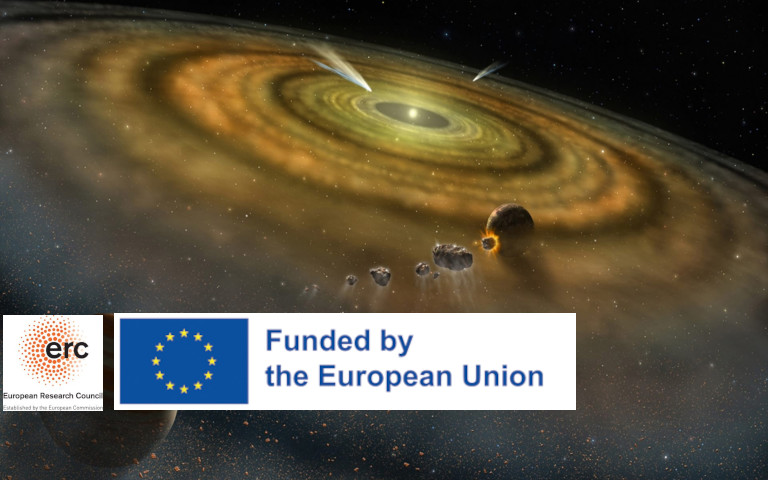Sulphur is the tenth most abundant element in the Universe and is known to play a significant role in biological systems. Moreover, some sulphur compounds have been proposed as necessary catalysts to form amino acids in the interstellar medium. While the carbon and oxygen budgets have been extensively studied, sulphur is the only element whose gas-phase abundance is still uncertain by several orders of magnitude. Astronomers have observed a series of sulphur-bearing species in space, which contatins less than 5% of the total sulphur atoms. It is still a mistery how and where the rest of sulphur atoms are. One possibility is that these atoms are forming unknown species that have not been identified yet. Alternatively, sulphur can be locked in some kind of (semi-)refractory material such as metallic sulfides (e.g., FeS) and large allotropes (S8) that cannot be detected using current instrumentation. The answer to this question constitutes the so called missing sulphur problem.
The project SUL4LIFE aims to resolve the missing sulphur problem with an innovative methodology that rests on three pillars: (i) To create an unprecedented database of high quality observations of sulphur-bearing molecules which allows us to trace the sulphur content from the natal molecular clouds to protoplanetary disks. This will provide a full inventory of sulphur species in different environments. In addition, we will carry out unbiased spectral surveys to serarch for new sulphur species, undetected in space thus far. (ii) To perform ab initio calculations and laboratory experiments to estimate the key reaction rates that are needed to fix the sulphur network and make chemical models reliable. These complex and accurate chemical models will allow us to predict the chemical composition of the total sulphur budget in different environments, even those difficult to be observed from the Earth. (iii) To perform bi-fluid (gas+dust) 3D magneto-hydrodynamics simulations with chemistry coupled (chemo-MHD) to follow the chemical evolution of the material from the natal cloud to the planet-forming sites, and hence, to investigate how sulphur was delivered to our planet. This heavy computationnal work can be extensively done by using artificial inteligence to reduce the computing time.
This project will disentangle the chemical composition of the sulphur budget from diffuse medium to the formation of proto-planetary disks. Finally, we will know how sulphur was delivered to our planet, which is an essential step to understand the emergence of life.
Project website: https://sul4life.cab.inta-csic.es/
Funding:
This work is supported by ERC grant SUL4LIFE, GA No. 101096293
Funded by the European Union. Views and opinions expressed are however those of the author(s) only and do not necessarily reflect those of the European Union or the European Research Council Executive Agency. Neither the European Union nor the granting authority can be held responsible for them.
IP: Asunción Fuente
Image Credit: NASA/FUSE/Lynette Cook








